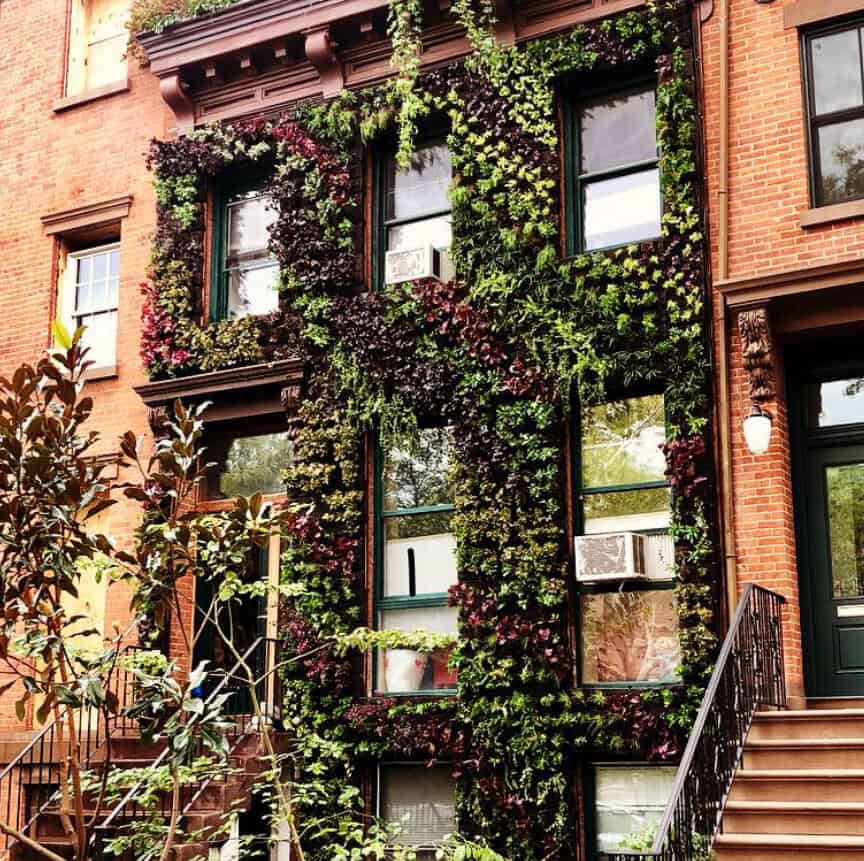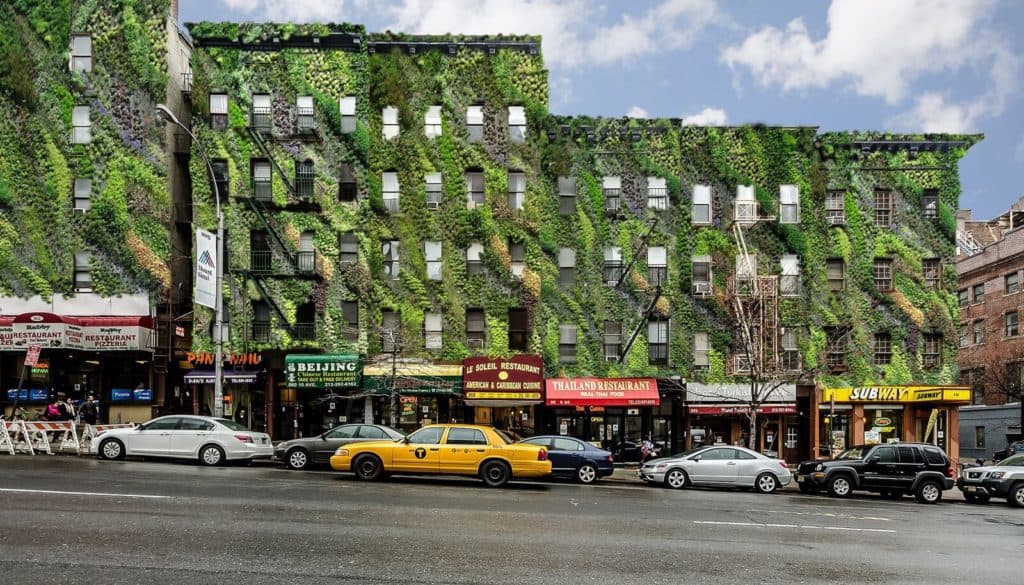Here is a great article by W42nd Magazine. Check out the magazine. It’s $4 for full access but well worth it. Picture, if you can, a New York in which towering glass and steel could be replaced by living walls teeming with plant life. The results were not only look better, it would counteract the choking affects of car fumes, bring down the searing temperature in summer, reduce rainwater runoff going into the sewer system, and provide a place for birds, butterflies, and other insects to thrive.
Picture, if you can, a New York in which towering glass and steel could be replaced by living walls teeming with plant life. The results were not only look better, it would counteract the choking affects of car fumes, bring down the searing temperature in summer, reduce rainwater runoff going into the sewer system, and provide a place for birds, butterflies, and other insects to thrive.
It’s less of a mad, eco-warrior fantasy then you might think. Javits Center has a green roof since 2010 – The largest in the city, spanning 89,001 m². In 2013, the Empire State building followed suit, commissioning 826 m² of green panels for its 21st, 25th, and 30th floors. And last year, the Whitehall co-op in the Bronx replaced an old concrete roof with 30,000 ft.² of plants, designed by the same landscape architects who created the Highline.
Gennaro Brooks-Church has taken the vision one step further by covering the entire façade of his Brooklyn brownstone with a living wall… and demonstrating what Hells Kitchen might look like using the same technology. It is, he believes, the first in the country. But he sincerely hopes it won’t be the last.
“Until now we haven’t been able to build a living mall in this climate that survives year-round,” he says, “the technique I use has coconut fiber foam that keeps roots insulated during the winter and during the hot summer days, so they don’t dry out and overheat. We also use evergreen plants for the winter, so you don’t need to replace plants despite the changing weather.” Living walls are still an emerging technology, says Gennaro. But they could change the landscape of New York City.
Surprisingly, however, his background is neither landscaping nor architecture. He actually studied creative writing and comparative religion.
“I bought this house in 2008,” he explains, “and had a construction loan lined up, then everything crashed, my loan fell through, and I couldn’t afford to hire a contractor. So I decided to do it myself. And I just did it differently. It turns out what I was doing was Green building, but I didn’t really know it at the time.”
His kitchen, the flooring, the doors, the sinks, the decking all are made entirely from salvaged materials. “The whole idea was that we’re just using too many resources,” he says. “The planet can’t handle it. So, I started thinking, how do I not do that? I wanted to reduce the amount of new materials that I consumed. Or, put more simply, I didn’t want to cut down any trees. And the flipside of that was, I had no money. All the materials we salvaged was from dumpster’s from the street.”

“Or someone would call me and say, look, I’m throwing away this kitchen, it’s perfectly fine. It’s not pretty, always. But for me, the beauty lies in the fact that no trees were cut down to make it.”
His second consideration was that he didn’t want to consume any more energy than absolutely necessary. So his investment went into high-quality windows, a super efficient boiler and toilets.
And the green wall is an extension of that – a natural insulator that keeps his home cool in the summer and nice and cozy in the winter.
“I’ve been planning the living wall since the beginning,” he says, “but the technology just wasn’t there.” In the end, he had to develop it himself. Coconut fiber acts like a sponge. You attach it to the wall, you make holes in it, then you put in the plugs of the plants. The roots just kind of grow into it, and it’s like soil. The idea is to pick plans that don’t get too big for that are super hearty, and survive the winter, and that require Little maintenance. Shrubs like rhododendrons, jazz hands, brass buckle, sprinter boxwood, and perennials such as autumn fern, corral bells black pearl, Liriope, and green carpet, made the cut.

Check out the full article here! It’s the cost of a small latte and well worth it.

